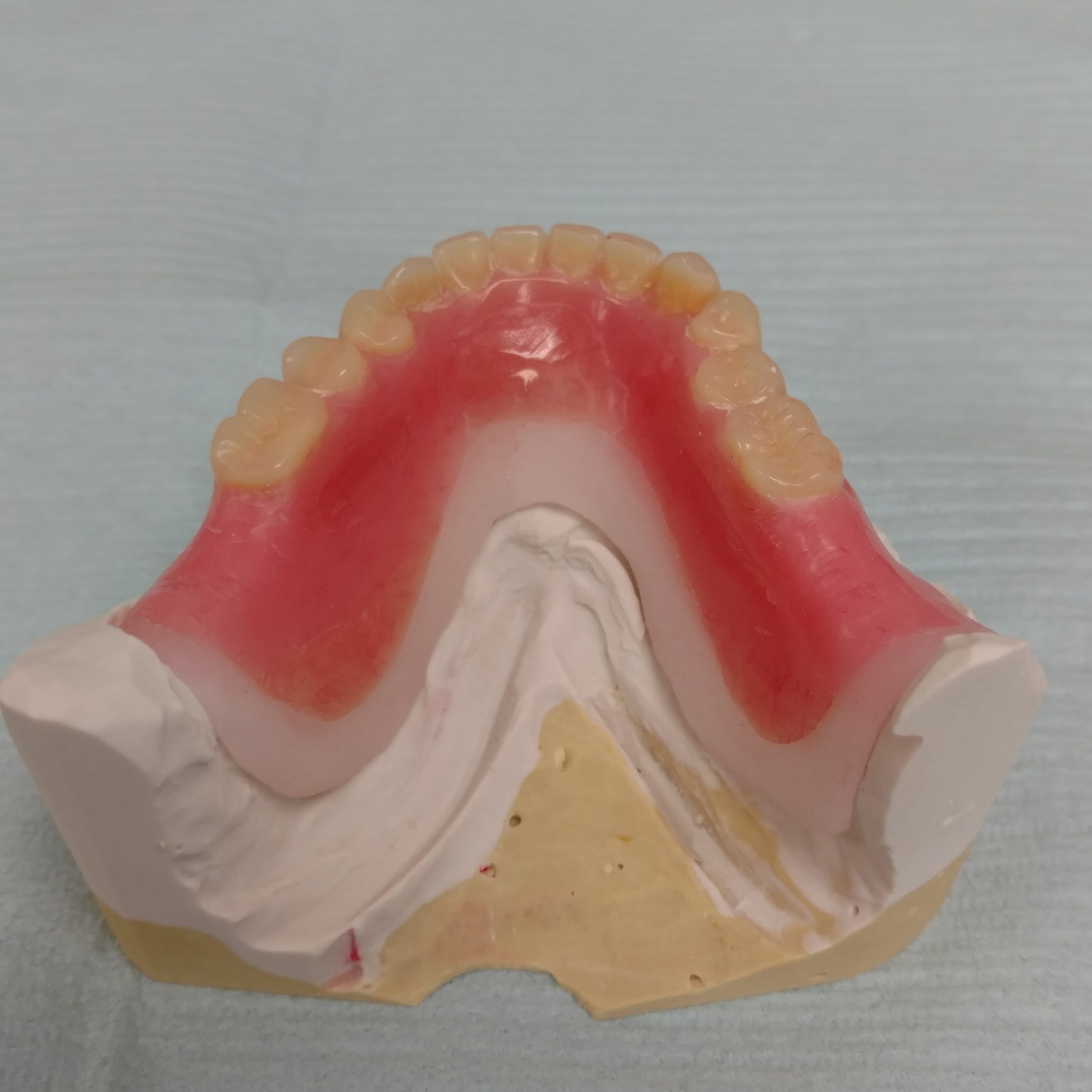With Removable Cases, the lower is often the greatest source of headache. The suction we rely on to retain the upper denture is often just not there in the lower. Implants in the lower ridge as a retainer for the lower denture have worked very well, however, the cost of this process is out of reach for a significant number of patients. This is when we turn to the landscape of the mouth and look for areas that could be a source of ‘undercuts’ upon which we might capitalize.
Generally, we would either send the patient off to surgery to have these areas removed or we would block them out on the master cast to allow for acrylic placement, however that creates pockets in need of a filler.
Recently, a patient in his late 60’s who is a retired Dental Technician, presented with an unstable lower, which created problems when speaking and eating. The patient knew his oral anatomy and realized that there was a bony undercut area on either lingual posterior side of his mandible. These were not tori, but just a negative deviation which was not reachable with acrylic. He asked if we could use the Preference soft denture liner material to help with his situation. After his Dentist made a lower impression, casts were poured and evaluated; we decided that it was worth a try.
 The area just above the floor of the mouth on both sides were noted and marked, as were other anomalies that might be used as undercut areas. Extensions of acrylic were created on the existing lower denture on both lingual sides of the arch, which extended to but did not engage the bony area and included space underneath for the Soft Liner.
The area just above the floor of the mouth on both sides were noted and marked, as were other anomalies that might be used as undercut areas. Extensions of acrylic were created on the existing lower denture on both lingual sides of the arch, which extended to but did not engage the bony area and included space underneath for the Soft Liner.
The acrylic surface was then prepared and the Preference Soft Denture Liner applied. The denture was seated and almost 2cm of soft liner was added to the undercut and onto the other anomalies. The material was then cured and finished.
The resulting denture engaged all of the undercuts and created a stable foundation for speech and mastication. No filler materials are needed and there is no discomfort to the patient, even with the deep lingual flanges.
“What a big difference it makes in the retention and stability of my lower denture. I couldn’t have expected a better result”.
When the correct materials and technique are applied, success for the patient, doctor and technician is possible – even with unusual oral landscapes.
